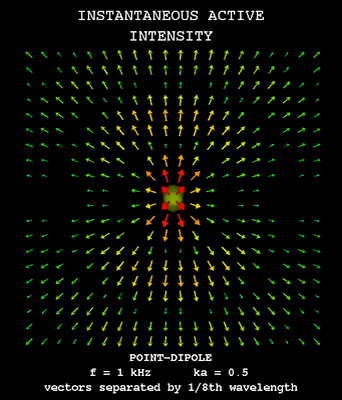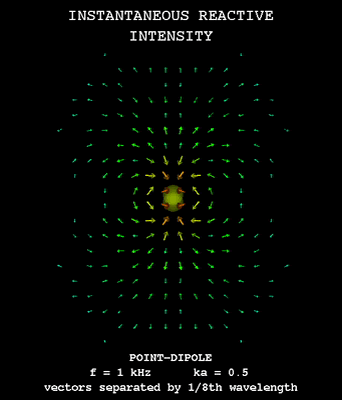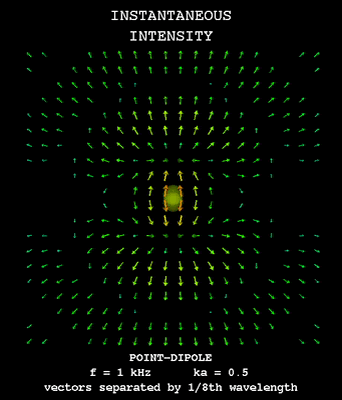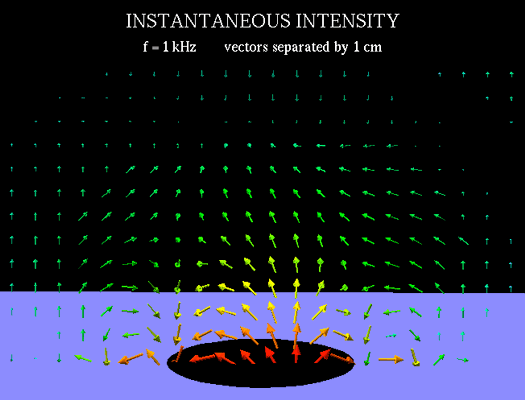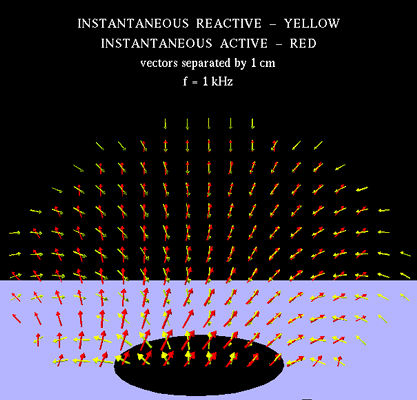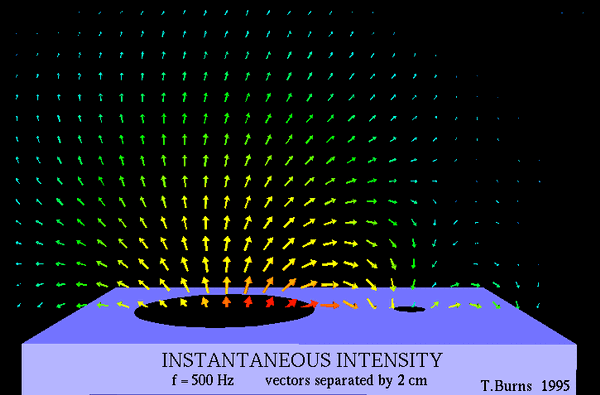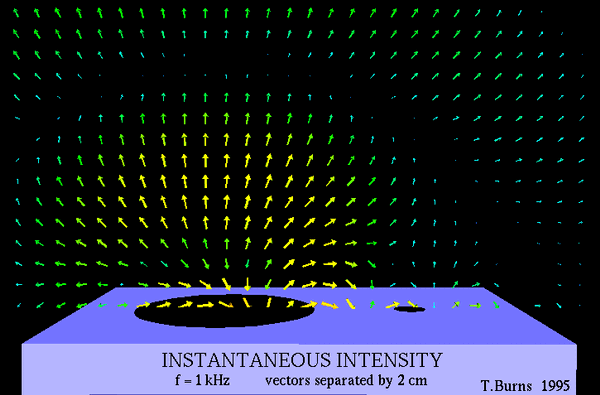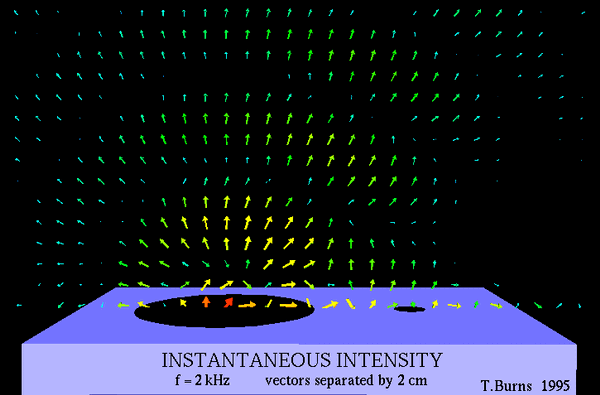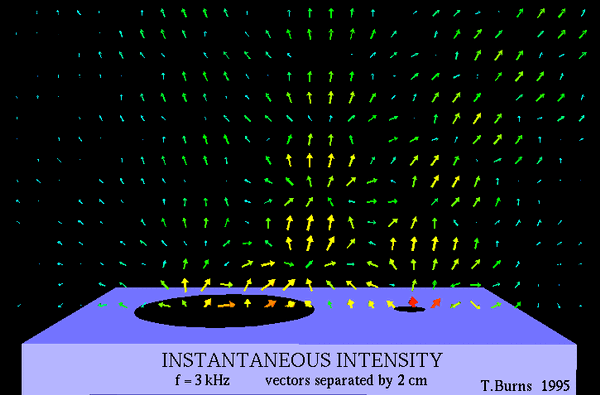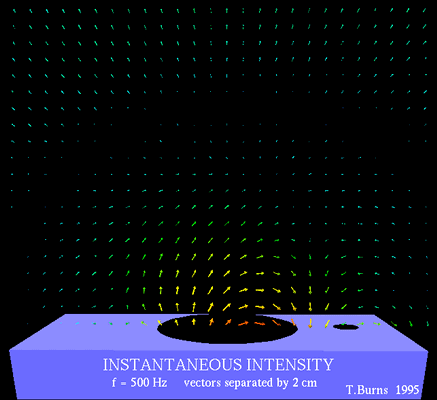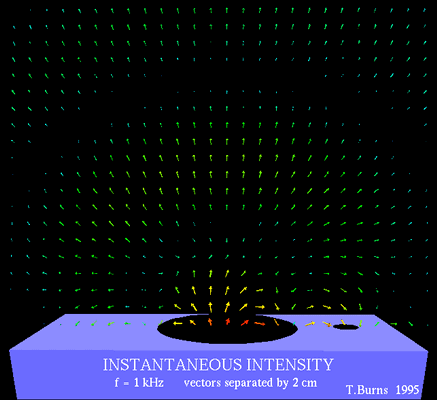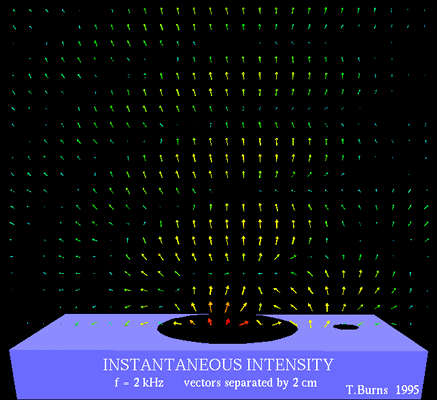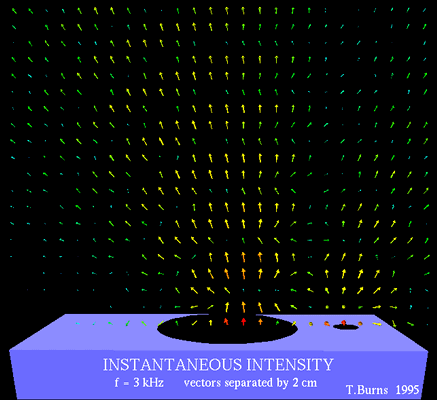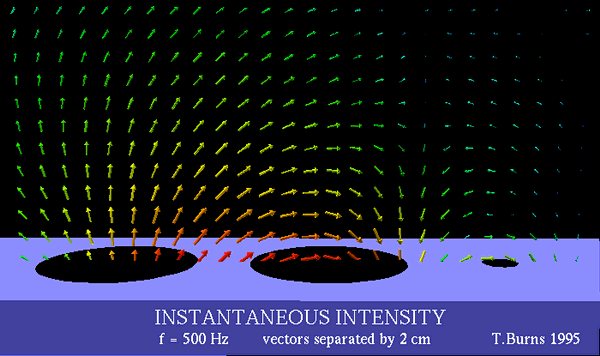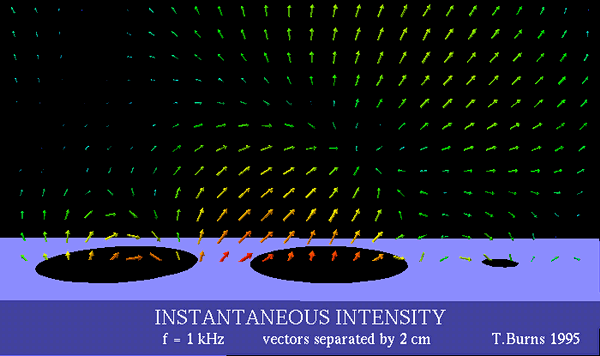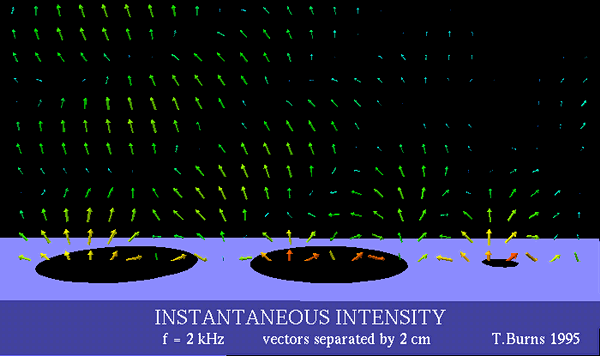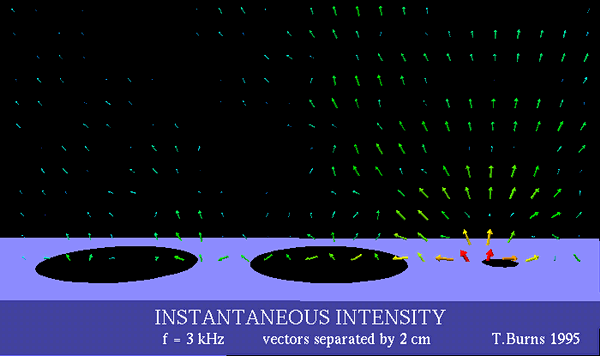|
Thomas H. Burns, Measurement and Visualization of Instantaneous Power Flow In Steady-State Acoustic Fields, Ph.D. Thesis in Acoustics, The Pennsylvania State University (1995).
Abstract
The objective of this study is to investigate the time and spatial dependence of power flow in monochromatic, steady-state acoustic fields. Knowledge of the instantaneous acoustic intensity vector Iinst(r,t) at discrete points throughout a three-dimensional (3D) space allows one to visualize, simultaneously, the time and spatial variation of power flow. The method of computing Iinst(r,t) at multiple points in rectangular coordinates is accomplished by:
- directly measuring the time-averaged active intensity <Iactive> and the potential energy density V(r) on a plane of discrete points arranged in a spatial grid,
- calculating the relative phase distribution φ on that plane by spatially integrating the ratio of <Iactive> to V(r); this ratio is proportional to ∇φ(r),
- using V(r) and φ to calculate the complex pressure on that plane,
- reconstructing the single-frequency complex pressure and complex particle velocity on multiple parallel planes throughout the 3D radiated free-field using Nearfield Acoustic Holography,
- calculating the time-averaged active intensity <Iactive> and the maximum amplitude Q(r) of the instantaneous reactive intensity at each discrete point in the reconstructed 3D field, and
- substituting <Iactive>, Q(r), and V(r) into an equation for the steady-state instantaneous intensity at a fixed point in space:
Iinst = < I >(r) + < I >(r) cos 2(ωt t - φ(r)) + Q(r)sin 2(ω t - φ(r))
A display of multiple (spatially -fixed) instantaneous intensity vectors that are "sequenced" in time allows one to visualize, simultaneously, the time and spatial dependence of power flow in the form of an animation. This technique is used to analyze the canonical problems of a monopole source and point-dipole source, and also to study the instantaneous power flow in the radiated nearfield of multiple-driver loudspeaker systems.
|
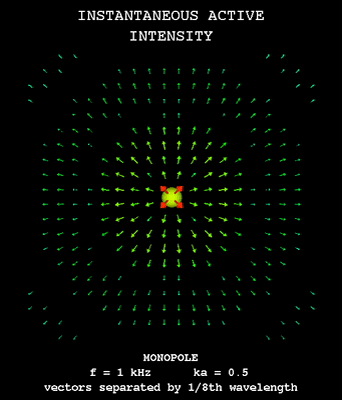
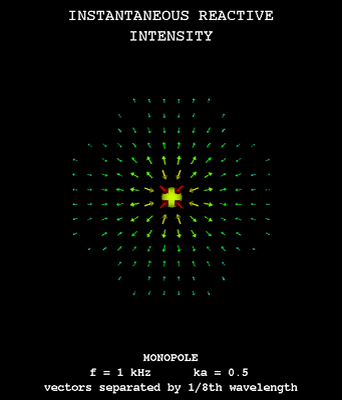
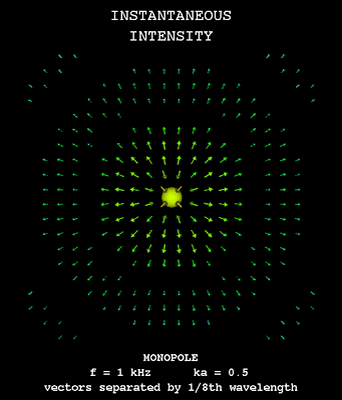
 Animations of Instantaneous Intensity
Animations of Instantaneous Intensity